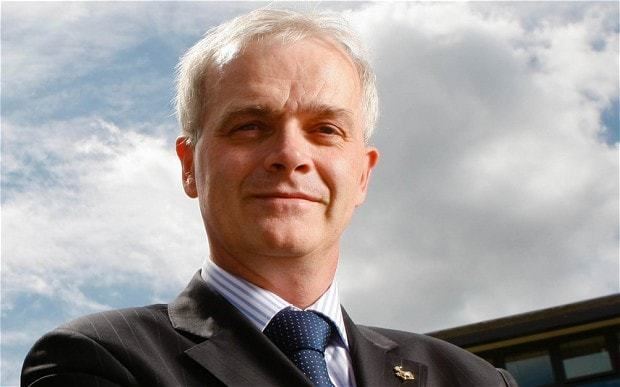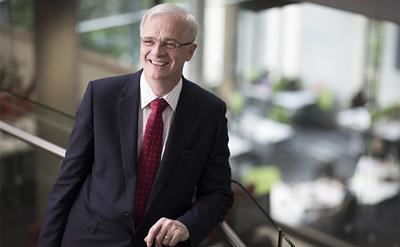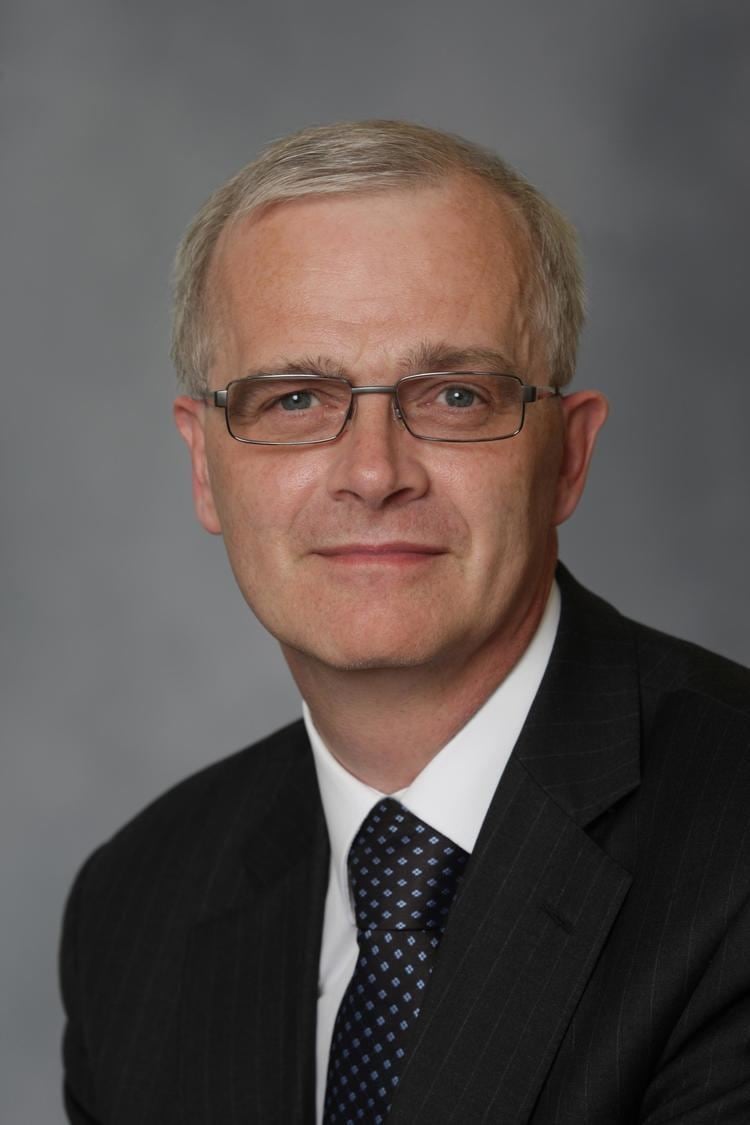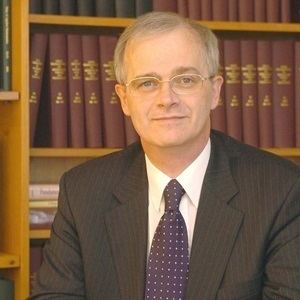Name Christopher Snowden | ||
 | ||
Books Introduction to Semiconductor Device Modelling People also search for Prince Edward, Duke of Kent, Jim Glover, Don Nutbeam, Helen Alexander CBE | ||
Sir Christopher Maxwell Snowden Kt FRS FREng FIET FIEEE FCGI (born 5 March 1956 in Kingston upon Hull) is vice-chancellor of the University of Southampton in Southampton, United Kingdom. He was president of Universities UK for a two-year term until 31 July 2015.
Contents
- Universities uk annual conference 2014 christopher snowden
- Early career
- University of Surrey
- University of Southampton
- Criticism of Salary Increase
- Universities UK
- Research
- Fellowships memberships societies and companies
- Honours and awards
- Personal life
- References

Universities uk annual conference 2014 christopher snowden
Early career

Snowden studied electronic and electrical engineering at the University of Leeds, gaining a BSc in 1977, an MSc and a Ph.D. in 1982. His Ph.D. involved microwave oscillators for radar applications and semiconductor device modelling. He conducted his Ph.D. research at Racal-MESL Ltd near Edinburgh in Scotland as well as at the University of Leeds.

Snowden was an applications engineer for Mullard Applications Laboratory from 1977-78. He lectured at the Department of Electronics in the University of York from 1982-83. From 1983-2005 he was a member of staff at the University of Leeds, his former alma mater, working in the Department of Electrical and Electronic Engineering, becoming professor of microwave engineering in 1992 until 2005. He was head of the school from 1995–98 and for a while was warden of Bodington Hall. Whilst at Leeds he was a founder of the Institute of Microwave and Photonics. He supervised 50 Ph.D. students. He has also worked at M/A-COM in the US from 1989-91 as senior staff scientist in the Corporate Research and Development Centre, based just outside Boston.

In 1998 he was appointed to the board of Filtronic plc as executive director of technology, where he initiated the Global Technology Group. He was subsequently appointed joint chief executive officer of Filtronic plc in 1999. As the company grew in 2001 he became chief executive officer of Filtronic ICS, responsible for compound semiconductor business and fabrication facilities in the UK and US (including the world's largest 150 mm gallium arsenide wafer facility at that time), defence businesses in the UK and US, module assembly and point-point microwave transceiver businesses.

He has held a number of consultancy positions including positions with General Electric (US), M/A-Com inc (US), Filtronic Comtek, Lucas-Variety (UK), Filtronic plc and Diamond Microwave Devices Ltd (UK). He was also a visiting professor at Durham University until 2005 and a visiting scientist at the Delft University of Technology from 1996-98.
University of Surrey
On 1 August 2005, Snowden was appointed president and vice-chancellor of the University of Surrey, succeeding Patrick J. Dowling. As vice-chancellor, he was responsible for leading the University's new strategy.
Surrey was awarded the 2006 THES Prize for Outstanding Contribution to Innovation and Technology sponsored by Toshiba. In November 2011, the University was awarded the Queen's Anniversary Prize for Higher and Further Education for its research and innovation in water technologies.
The University secured £65 million in 2013 from the UK Government and an international consortium of industry partners for a new research hub to take global leadership in 5G mobile telecommunications. It also opened a vet school in 2014 which is one of only eight such schools in the UK with its new £45million buildings opened in October 2015 by HM The Queen.
Under Snowden's leadership, the University achieved 4th place in the 2016 Guardian University League Table rising from 6th place in 2015. Surrey was named University of the Year in The Times and Sunday Times Good University Guide 2016. It came top in the 'best teaching' and 'best student experience' categories. This was in spite of an ongoing dispute with students and the UCU over cuts across the University.
University of Southampton
On 20 March 2015, the University of Southampton announced that Sir Christopher would become its new Vice Chancellor following the retirement of the present Vice Chancellor, Don Nutbeam, a move which took effect from October 2015.
Criticism of Salary Increase
In June 2017, Snowden was singled out by the UK's Minister of State for Universities and Science, Jo Johnson, for his rapid pay increase in recent years. In 2009-10, the salary for Southampton's VC was £227,000, this rose by nearly 50% to £352,000 in 2015-16 when Snowden took office. Johnson stated, "It is hard at a time when student to see evidence of value for money to have these concerns about the rate [of increase] of vice-chancellors’ pay. I do think vice-chancellors are paid too much and it does not do much for the morale of their workforce."
Universities UK
Sir Christopher was president of the 134-member Universities UK group (UUK), from 1 August 2013 to 31 July 2015. He succeeded Eric Thomas, the vice-chancellor of the University of Bristol and was succeeded by Dame Julia Goodfellow. Prior to that, Sir Christopher held one of the vice-president positions of UUK, representing England and Northern Ireland, and from 2009 to 2011 he chaired their Employability, Business and Industry Policy Committee.
Research
Snowden's research interests are in the areas of microwave, millimetre-wave and optoelectronic devices and circuits. He pioneered the application of numerical physical device models to comprehensively describe electron transport in microwave transistor operation and in particular investigating device-circuit interaction properties. This allowed transistor designs to be significantly improved and optimized. This work was specifically recognised in his election as a Fellow of the Royal Society and as a Fellow of the IEEE.
His early work was focused on two-dimensional numerical modelling. In particular, he worked on hot-electron effects in short-gate length field effect transistors (FETs), where he showed that the high energy electrons in transistor substrates contributed significantly to the conduction current. He also contributed to the development of new non-linear laser diode models which found particular application in emerging high data rate communication systems.
During the mid-1980s, along with colleagues in Lille and Duisburg universities, he explored the potential for a new class of physical model which became known as the quasi-two-dimensional (Q2D) approach. This was shown to be extremely effective at modelling field-effect transistors such as the popular metal semiconductor FET (MESFET). Snowden's models were shown to have the ability to accurately predict the DC and RF performance based on the physical geometry and material properties available from fabrication data. Moreover, the Q2D model can be solved over 1000 times faster than full two-dimensional models, making it suitable for computer aided design applications. These models were widely used around the world in industry and academia. The models were used to develop high performance microwave transistors with highly predictable characteristics which went on to be manufactured in high volumes by several companies. One of the most successful was the ‘hi-lo-hi’ pulse-doped microwave transistor which achieved high breakdown voltages and was particularly suited to high volume manufacturing.
Snowden went on to apply this technique to high electron mobility transistors (HEMTs), between 1995 and 2005 utilizing highly effective quantum charge-control models. It was shown to be an effective method for modelling and designing AlGaAs/GaAs HEMTs and the important pseudomorphic high electron mobility transistors (pHEMTs) based on InGaAs/GaAs systems. New designs of power pHEMT (some with capabilities of over 100 W at 2 GHz) were developed and fabricated using this knowledge, which achieved high breakdown voltages whilst retaining excellent signal gain at microwave frequencies. pHEMTs are widely used in communication applications and many billions of circuits based on pHEMT integrated circuits have been used in products such as mobile phones, radar and satellite receivers. More recently, since 2008 he has applied new Q2D models to laterally diffused MOS power transistors (LDMOS) for high power amplifiers in communications systems, achieving similar high levels of accurate prediction and speed advantage.
During the period 1990 to 1997 Snowden developed a new electrothermal physics-based equivalent circuit model for heterojunction bipolar transistors which was suited to power amplifier applications (widely used in cellular handsets). He was awarded the IEEE Microwave Theory and Techniques Society Microwave Prize in 1999 for this work described in his 1997 paper "Large-signal Microwave Characterization of AlGaAs/GaAs HBT's Based on a Physics Based Electrothermal Model' (IEEE TMTT, MTT-45, pp. 58–71, 1997).
Snowden went on to develop further models based on incorporating the interaction between thermal effects and electronic behaviour, which proved to be important in accurately modelling power transistor and in power amplifier designs. Subsequently, he developed this into fully integrated models incorporating electromagnetic effects into the physical models and demonstrating the significance of this type of global model for millimetre-wave circuits.
He also developed several novel techniques for integrating microwave, millimeter-wave and optical circuits and during his time at M/A-COM whilst working as Senior Staff Scientist he extended their glass microwave integrated circuit (GMIC) technology to photonics, introducing the concept of embedding light guides in the GMIC to allow photonic circuits and interfaces to solid-state lasers, detectors and high speed processors. He first presented these concepts at the 1991 IEEE LEOS conference and the concept was subsequently developed for use at 622Mbit/s in synchronous optical network (SONET) applications.
Snowden has written 8 books including World Scientific in English, Introduction to Semiconductor Device Modelling and Introduction to Semiconductor Device Modelling He published one of the first interactive circuit analysis software packages for personal computers with Wiley in 1988. He has acted as editor for 4 journals and 3 special issues as well as the EEE Wiley book series. He has given over 80 keynote invited and plenary lectures. He has chaired a number of major international conferences including the 2006 European Microwave Conference.
Fellowships, memberships, societies and companies
Snowden is past-president of the Institution of Engineering and Technology (IET) (2009–10). and until August 2013 he was vice-president of the Royal Academy of Engineering where he chaired the Academy's Engineering Policy Committee. In 2014 he was invited to be Deputy Chairman of the 2015 judging panel for the Queen Elizabeth Prize for Engineering (QEPrize) and is now the Chair.
Sir Christopher was appointed by the Prime Minister to his advisory Council for Science and Technology (CST) in 2011. He is also a member of the UK Government's Foresight Advisory Board.
Sir Christopher was a member of the governing body of the UK's Innovate UK (previously known as the Technology Strategy Board (TSB)) 2009-2015. He was a member of the Council for Industry and Higher Education (CIHE) (CIHE), and is a current member of the Leadership Council for the National Centre for Universities and Business (NCUB). Between 2006 and 2012, he was a Member of the Council of the UK's Engineering and Physical Sciences Research Council (EPSRC).
He is a Fellow of the Royal Society (2005) and was a member of their Council (2012–13). He is a Fellow of the Royal Academy of Engineering (2000), the Institution of Engineering and Technology (IET) (1993), the IEEE (1996) and the City and Guilds of London Institute (2005).
He has been a member of Foresight Committee panels on Communications and Media, and Exploitation of the Electromagnetic Spectrum. He was a member of the UK's National Advisory Committee on Electronic Materials 2002-7. He was a member of the supervisory board of the Electromagnetic Remote Sensing Defense Technology Centre from 2002-5. He has appeared before the UK's House of Commons Select Committee on several occasions.
He was Chairman of the Daphne Jackson Trust from 2005 to 2009 and was a patron of the Trust until 2015. He was a patron of Surrey Youth Focus and Transform Housing & Support until 2015. He was a Governor of the Royal Surrey County Hospital NHS Foundation UK until 2011.
He has been a non-executive director of companies such as Intense Ltd, CENAMPS Ltd and SSTL. He was a Board member of the European Microwave Association from 2003-7, where he was also Vice-Chair for a period. He was Chair of HERO Ltd from 2006-9 and a Member of the governing board of the Engineering Technology Board from 2007-9.
He was a member of the South East England Science, Engineering and Technology Advisory Council (SESETAC) until 2011. He is a board member of the ERA Foundation.
Honours and awards
He was awarded the IEEE Microwave Prize in 1999 for his world-leading research paper on Microwave power transistors for communicating applications and the IEEE Distinguished Educator Award in 2009 by the Microwave Theory and Techniques Society (MTT).
The Royal Academy of Engineering awarded him their Silver Medal for 'Outstanding personal contributions to the UK microwave semiconductor industry' in 2004.
Between 1998 and 2005 he was a Distinguished Lecturer for the IEEE Electron Devices Society.
In 2003 he was invited by HM The Queen to Buckingham Palace for the Pioneer Reception recognizing his contributions to communication technology.
In 2009 he received the IEEE MTT Distinguished Educator Award for outstanding achievements as an educator, mentor and role model of microwave engineers and engineering students.
Snowden was knighted in the 2012 New Year Honours for services to engineering and higher education.
He received the 2012 Outstanding Career Award from the European Microwave Association.
Personal life
He married Irena Lewandowska in 1993. They have two sons (born March 1994 and August 1996).
